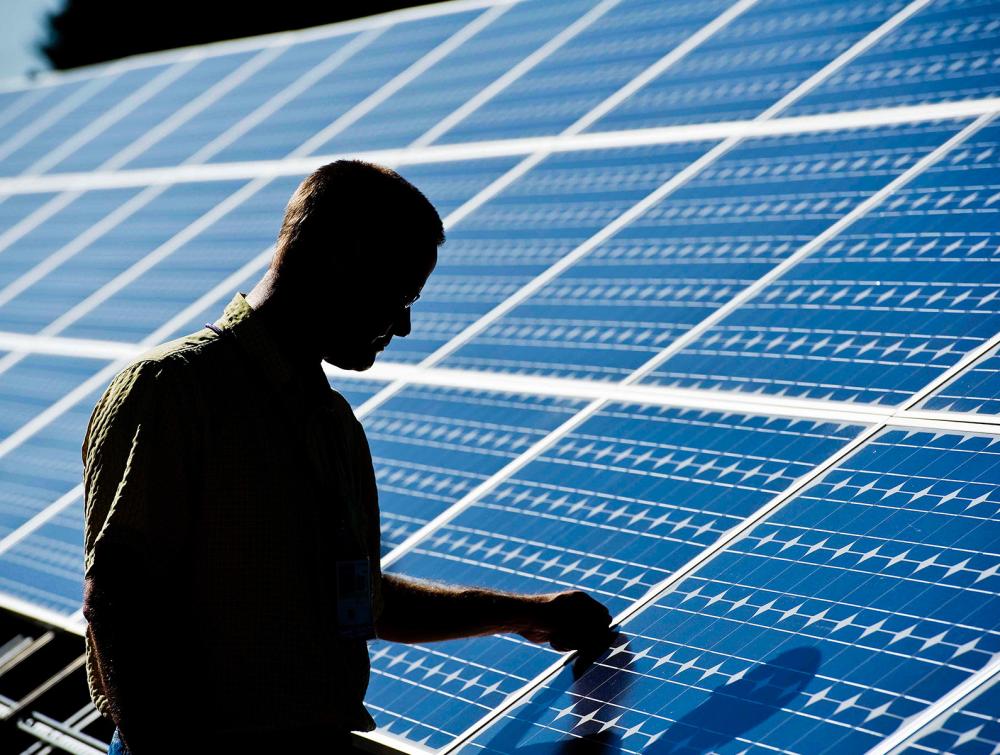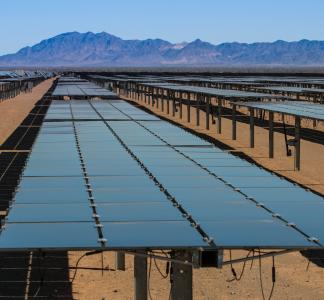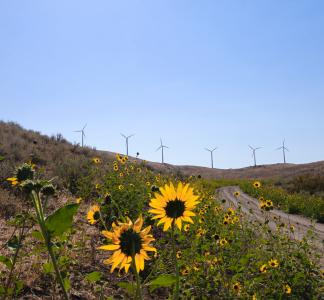The government updated its decade-old solar energy plan. What’s in it?

Randy Montoya, Sandia Labs, flickr
Updates identify places in the West where solar development could be appropriate.
Climate change threatens our communities and treasured public lands. To combat this crisis, we need a swift transition to renewable energy: that includes phasing out fossil fuels, building energy-efficient infrastructure, and ramping up rooftop solar panels and larger-scale clean energy projects.
The good news? The West boasts abundant solar, wind and geothermal resources that can help us achieve this transition.
In August 2024, the Bureau of Land Management (BLM) released its final Western Solar Plan update, which guides responsible solar energy development on public lands across the West. Established in 2012, the plan is a region-wide smart-from-the-start endeavor that identified areas in six southwestern states with high solar potential and low resource conflicts. The final Solar Programmatic Environmental Impact Statement (PEIS) is the first update since its establishment.
The updated Western Solar Plan aims to help President Biden’s ambitious goal of a 100% clean electricity grid by 2035.
Western Solar Plan update: Smart solar development with strong safeguards
The updated Western Solar Plan will guide utility-scale solar development across BLM lands in 11 Western states (Arizona, California, Colorado, Nevada, New Mexico, Utah, Idaho, Montana, Oregon, Washington and Wyoming), providing a blueprint for how we expand solar power while protecting sensitive areas. It’s a great starting point to build on as we make the urgent switch to renewable energy.
Key highlights of the updated solar plan:
- Areas open for solar projects: Of the 162 million acres BLM administers across those 11 states, 31.7 million acres (about 20%) are designated as solar application areas, where the BLM will evaluate proposed projects on a case-by-case basis. About 3.8 million acres are considered "avoidance" areas, where additional stipulations will apply and community input will help shape project decisions.
- Lands off-limits for projects: Approximately 130 million acres of BLM land (about 80%) are excluded from solar development—including National Monuments, Wilderness Areas, designated wildlife habitat and other protected landscapes. This helps safeguard sensitive ecosystems, wildlife migration corridors and cultural heritage sites, among other important places.
- New project design features: Solar developers are required to avoid, minimize, or compensate for a project’s impacts on resources—including habitats and groundwater. These measures could include turning off lights at night to avoid impacts to wildlife or keeping frontline communities informed about how they can provide feedback.
- Looking ahead at likely development: While 31.7 million acres are available for application, the PEIS estimates that only about 700,000 acres (2%) are likely needed to meet our clean energy goals by 2045. If this target is met, the resulting renewable energy projects could displace over 123 million metric tons of carbon emissions annually—the equivalent of closing about 32 coal-fired power plants.
- It doesn’t guarantee project approval: No individual projects have been approved yet under the updated Western Solar Plan. Every proposed solar project must undergo full NEPA review, allowing for public input and the opportunity to modify, relocate, or deny projects to mitigate potential environmental impacts.
What’s new and what could be better:
- A smarter way to choose where to build solar: The plan combines some of the best elements from previous proposals. It directs eligible solar projects toward areas that are within 15 miles of existing or planned transmission lines. Outside this buffer, eligible projects are directed towards previously disturbed lands. This approach balances energy development with protections for wildlife, habitat, and cultural resources.
- Making it even better: While the plan is a strong step forward, we believe BLM can—and should—build on it going forward. For example, BLM should take the next step of identifying more discrete, low-impact areas where large-scale solar projects will be incentivized and prioritized. This would lead to faster, more efficient project approvals because there will be fewer conflicts over high-value natural areas and less community opposition.
Western Solar Plan part of a smarter, more sustainable approach to public lands management.
The Western Solar Plan comes on the heels of the Biden-Harris administration’s announcement in April 2024 that it had surpassed the congressional goal of permitting 25 gigawatts of renewable energy projects on public lands by 2025, over a year early. Let’s keep the progress going.



